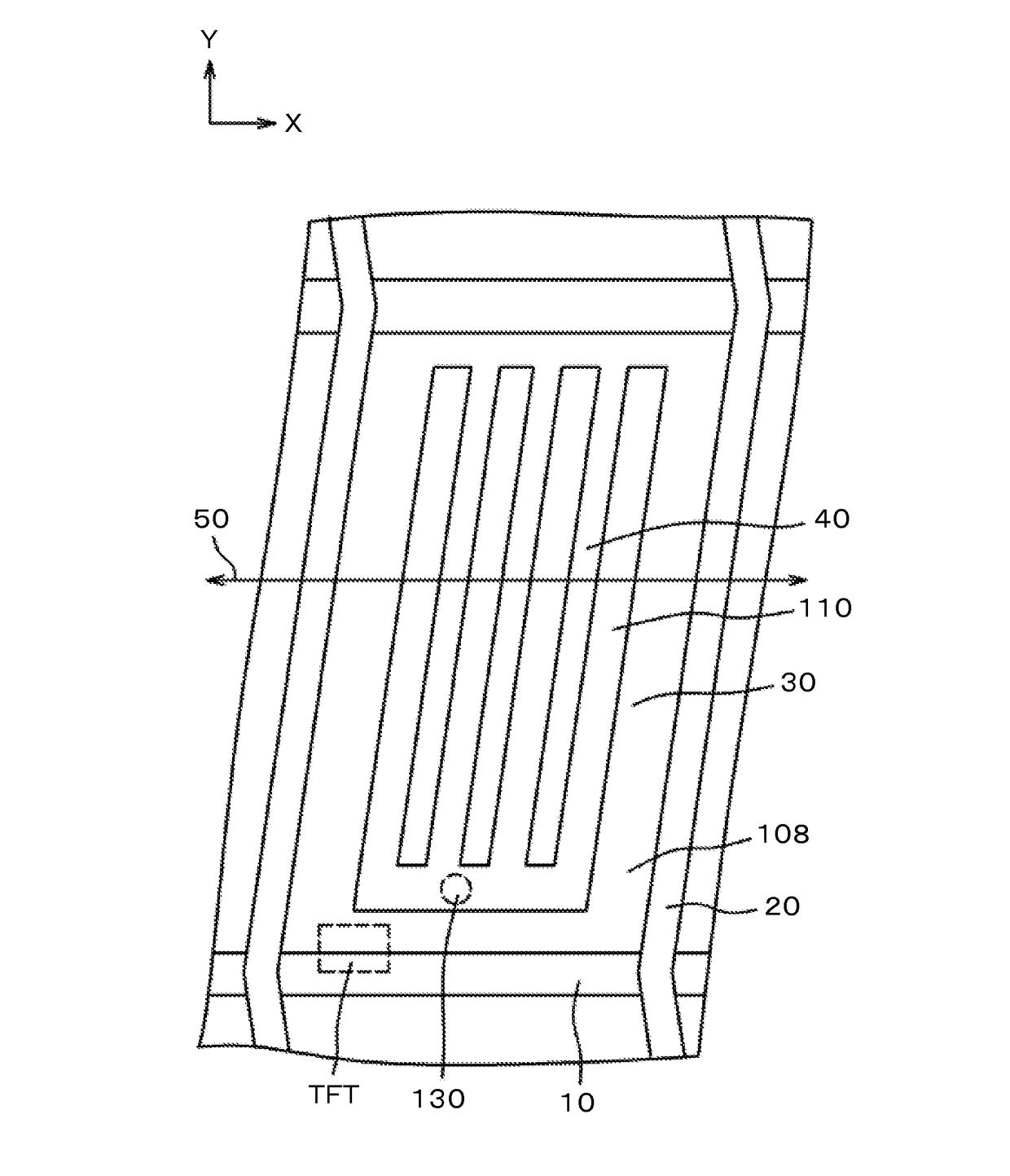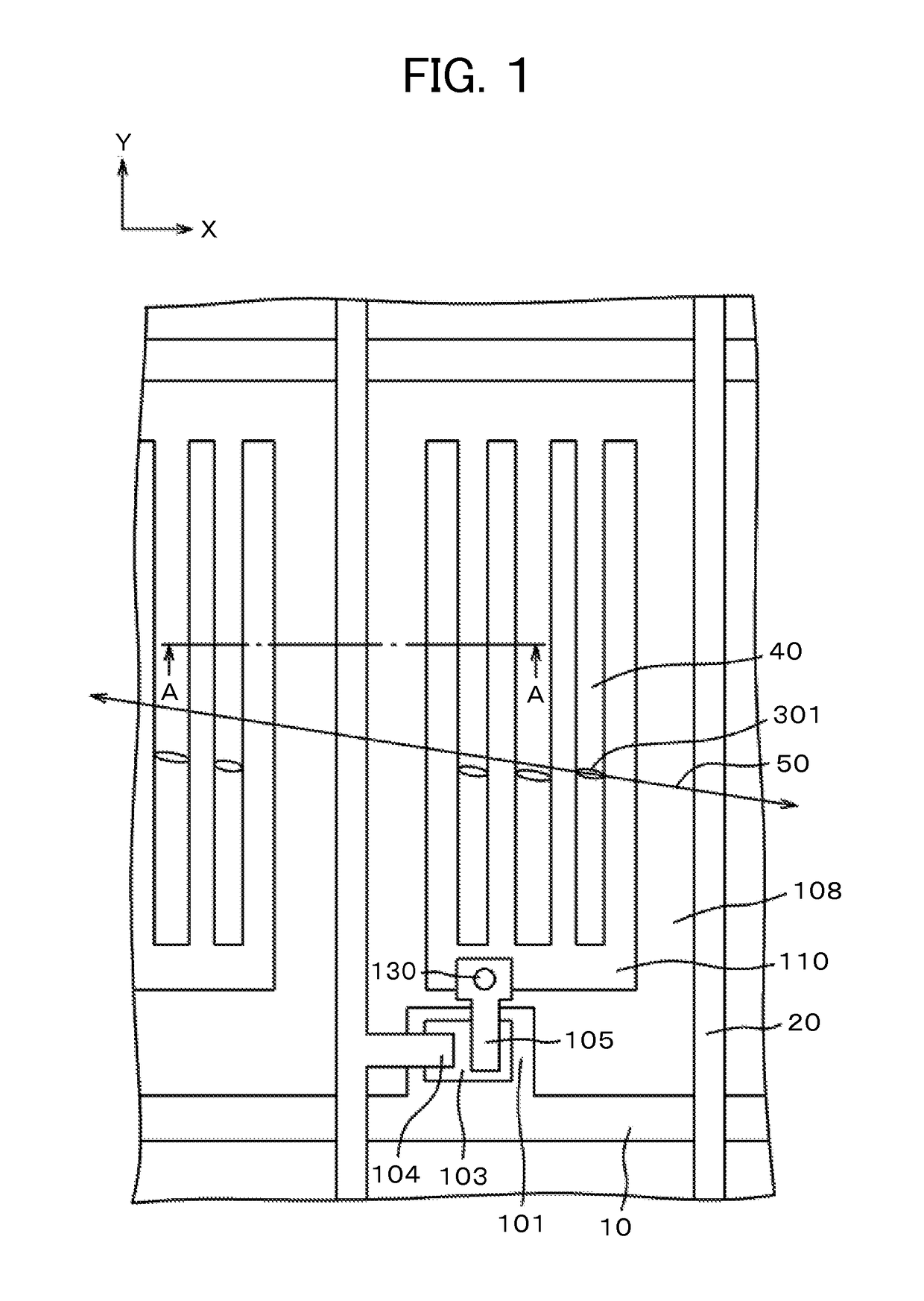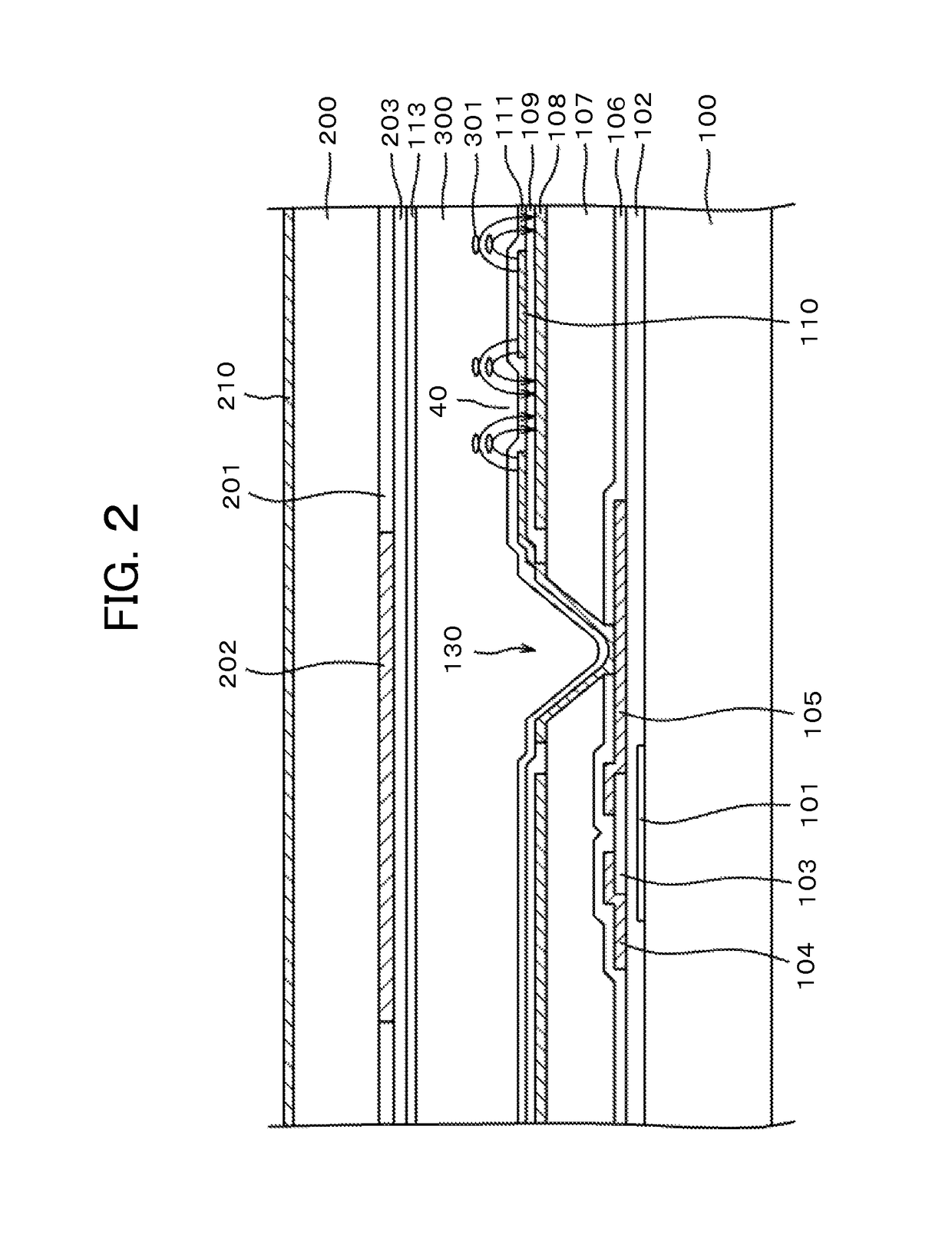Liquid crystal display device
a liquid crystal display and liquid crystal technology, applied in non-linear optics, instruments, optics, etc., can solve the problems of liquid crystal molecules being more likely to rise and blur on the screen, and achieve the effect of increasing screen luminance and reducing disclination area
- Summary
- Abstract
- Description
- Claims
- Application Information
AI Technical Summary
Benefits of technology
Problems solved by technology
Method used
Image
Examples
embodiment 1
[0034]FIG. 1 is a plan view illustrating the structure of a pixel according to Embodiment 1 of the present invention while FIG. 2 is a cross section of the pixel. FIG. 3 is a cross section taken along line A-A of FIG. 1. In the present invention, negatively anisotropic LCs are used as liquid crystals 301. First, the pixel structure is described with reference to the cross section of FIG. 2. As illustrated in FIG. 2, a gate electrode 101 is formed on a glass-made TFT substrate 100, and a gate insulting film 102 is deposited on the gate electrode 101 and the TFT substrate 100. A semiconductor layer 103 is formed above the gate electrode 101 with the gate insulating film 102 located therebetween.
[0035]The semiconductor layer 103 is formed of a-Si. For electrical connection with a drain electrode 104 and a source electrode 105, the semiconductor layer 103 also includes n+a-Si. An inorganic passivation film 106 is deposited on the semiconductor layer 103, drain electrode 104, and source ...
embodiment 2
[0059]An IPS LCD has excellent viewing angle characteristics, but they may vary depending on the directions in which the viewer sees the screen, that is, on azimuth angles. To counter this, there is a method called the quasi-dual-domain scheme. In the method, two types of pixels in which the liquid crystal molecules rotate in different directions are used, and the azimuth angle characteristics are made uniform by particular combinations of these two types of pixels.
[0060]FIG. 8 is a plan view of a pixel of a quasi-dual-domain LCD according to Embodiment 2 of the invention. In FIG. 8, the alignment axis 50 extends in the x direction. The long axis of the slits 40 of a pixel electrode 110 is tilted by +θ degrees with respect to a direction perpendicular to the alignment axis 50. In this case, application of a voltage to the pixel electrode 110 causes the liquid crystal molecule to rotate in the left direction.
[0061]Though not illustrated, the pixel electrodes of the two pixels located...
embodiment 3
[0063]In another method for lessening the dependency of viewing angle characteristics on azimuth angles, two domains in which liquid crystal molecules rotate in different directions are created within a pixel. FIG. 9 is an example of a pixel of such an LCD to which the invention is applied. As illustrated in FIG. 9, two data lines 20 that outline the pixel are bent near the center of the pixel, and a pixel electrode 110 includes upper and lower slits 40 that extend from its central bus electrode. The alignment axis 50 of the alignment film extends in the x direction. Although the upper half and lower half of the pixel electrode 110 are both in the shape of a comb, the long-axis angle of the teeth of the upper half with respect to a direction perpendicular to the alignment axis 50 (i.e., with respect to the y-axis) is opposite to that of the lower half. In other words, the upper and lower slits 40 of the pixel electrode 110 have different long-axis angles with respect to the y-axis.
[...
PUM
| Property | Measurement | Unit |
|---|---|---|
| thickness | aaaaa | aaaaa |
| transmittance rate | aaaaa | aaaaa |
| transmittance rate | aaaaa | aaaaa |
Abstract
Description
Claims
Application Information
 Login to View More
Login to View More - R&D
- Intellectual Property
- Life Sciences
- Materials
- Tech Scout
- Unparalleled Data Quality
- Higher Quality Content
- 60% Fewer Hallucinations
Browse by: Latest US Patents, China's latest patents, Technical Efficacy Thesaurus, Application Domain, Technology Topic, Popular Technical Reports.
© 2025 PatSnap. All rights reserved.Legal|Privacy policy|Modern Slavery Act Transparency Statement|Sitemap|About US| Contact US: help@patsnap.com



